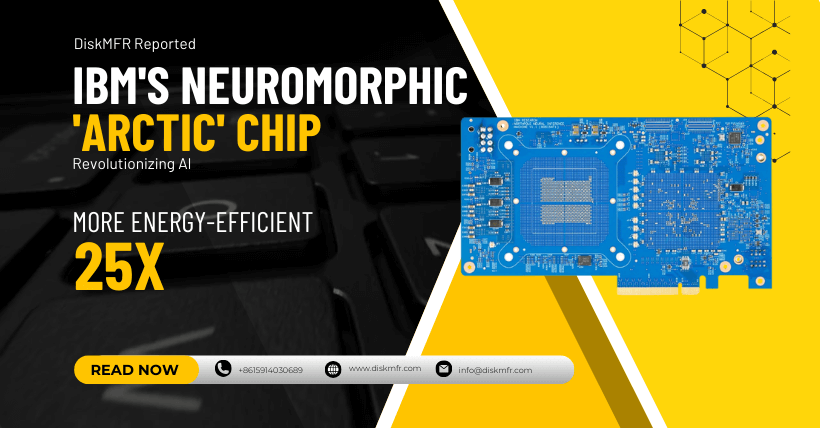01
Introduction
IBM Corporation has sent ripples through the world of artificial intelligence and computing with its groundbreaking invention: the ‘Arctic’ neuromorphic chip. This cutting-edge technology sets a new benchmark in image recognition algorithms, boasting a staggering 22-fold increase in processing speed compared to similar commercial chips, all while being 25 times more energy-efficient. The research paper detailing the ‘Arctic’ chip was unveiled in the October 19th edition of the prestigious ‘Science’ magazine, marking a significant milestone in the field of AI and chip architecture.
02
Understanding the Arctic Chip
① Unveiling Neuromorphic Chips
At the core of this revolutionary technology is the concept of neuromorphism. The ‘Arctic’ chip is meticulously designed to mimic the human brain’s operation by interweaving computing modules with modules that store information. This amalgamation enables each computing core to seamlessly access remote storage blocks, facilitating a lightning-fast exchange of information between the computing and storage units.
② Reduced Power Consumption
One of the key highlights of the ‘Arctic’ chip is its remarkable reduction in power consumption. By eliminating the need for frequent access to external memory, this chip sets the stage for more energy-efficient AI processing. This innovation is a game-changer in a world grappling with environmental concerns and energy efficiency.
③ The Core Components
The ‘Arctic’ chip comprises 256 computing units or cores, each equipped with its own memory. With the implementation of the latest manufacturing processes, efficiency soars, offering a 25-fold improvement over its predecessors. This makes the ‘Arctic’ chip an ideal choice for applications where speed is of paramount importance, such as autonomous driving.
④ Evolution from ‘TrueNorth’
Before ‘Arctic,’ IBM had pioneered the ‘TrueNorth’ chip, which shared the same foundational idea. However, ‘Arctic’ represents a significant leap forward by transforming this technology into a digital architecture that seamlessly integrates with contemporary silicon technology used in computers. According to Dharmedra Moedha, the head of the research team at IBM Research Lab, this marks an entirely new approach to computer architecture.
03
The Future of Computing
With the ‘Arctic’ neuromorphic chip, IBM is forging a path toward a new era in computing. The speed and efficiency it brings to image recognition algorithms have the potential to impact various industries and applications, from healthcare to autonomous systems. The ‘Arctic’ chip represents not just a technological advancement but a paradigm shift in how we approach AI and computing.
04
Conclusion
In a world where technology evolves at breakneck speed, IBM’s ‘Arctic’ neuromorphic chip is a testament to human ingenuity. This innovation is more than just a leap in processing power; it signifies a step forward in understanding and replicating the intricacies of the human brain. As we anticipate the ripple effects of the ‘Arctic’ chip, we can only wonder about the exciting possibilities it will unlock for our future.
05
Frequently Asked Questions
Q1. What is a neuromorphic chip, and how does it work?
A neuromorphic chip is a type of microprocessor designed to imitate the operation of the human brain. It interweaves computing and storage modules to accelerate information exchange, reducing power consumption.
Q2. How does the ‘Arctic’ chip compare to other commercial chips?
The ‘Arctic’ chip outperforms similar commercial chips by processing image recognition algorithms 22 times faster and being 25 times more energy-efficient.
Q3. What applications can benefit from the ‘Arctic’ chip’s speed and efficiency?
The ‘Arctic’ chip is ideal for speed-critical applications such as autonomous driving and other tasks where rapid image recognition is essential.
Q4. What sets the ‘Arctic’ chip apart from IBM’s previous ‘TrueNorth’ chip?
While ‘TrueNorth’ shared the same foundational idea, ‘Arctic’ transforms this technology into a digital architecture compatible with contemporary silicon technology, representing a significant leap forward.
Q5. How will the ‘Arctic’ chip impact the future of computing and AI?
The ‘Arctic’ chip is poised to revolutionize the computing and AI landscape, with its unparalleled speed and energy efficiency paving the way for numerous applications and industries.

Related:








